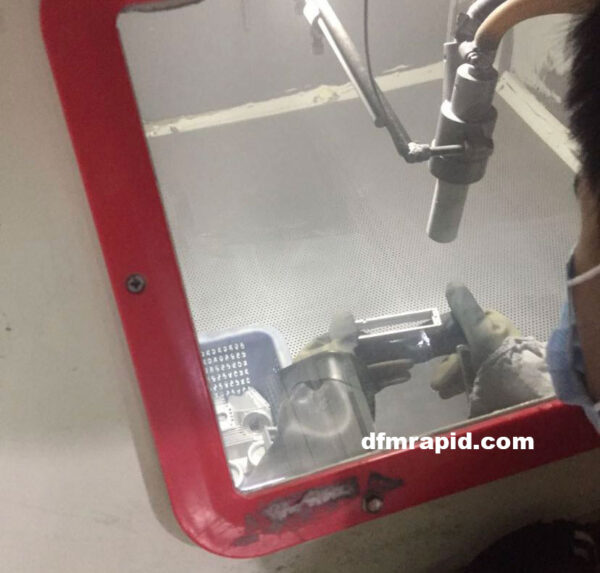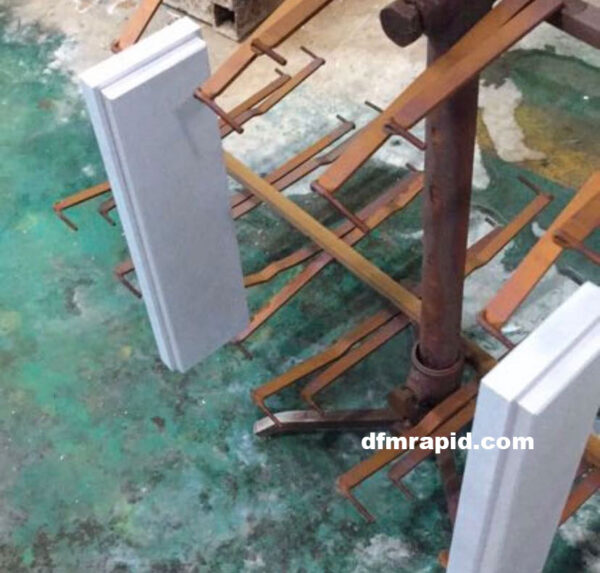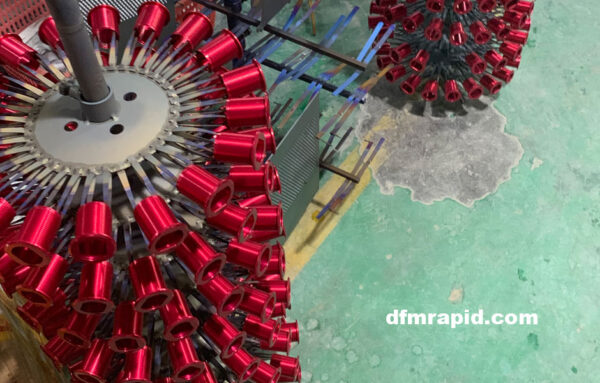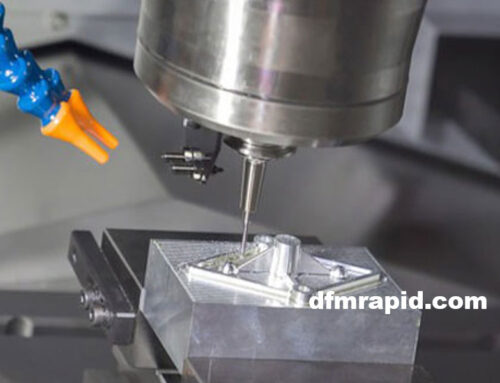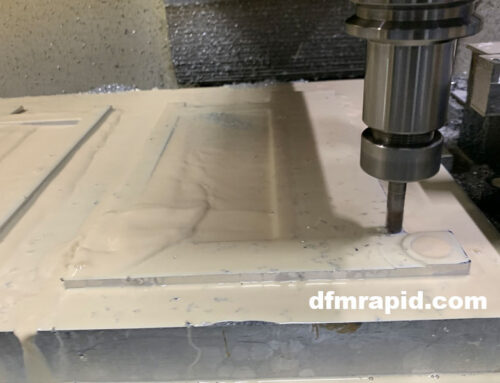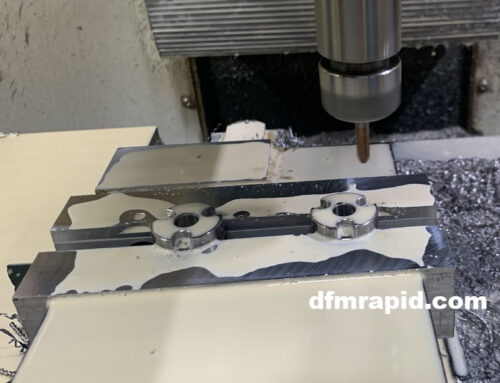Anodizing is one of the most common surface treatment options available for CNC aluminum parts. Anodizing is a great surface treatment option for corrosion and wears resistance. We can use anodizing to improve paint adhesion, provide a good surface for impregnation, and improve other surface qualities.
Step 1
Normally, we will sandblast first to cover the tooling mark of the CNC aluminum parts. Unless you require no sandblast.
Step 2
Hang the parts on the fixture after sandblasting. Waiting to enter the pond of chemical baths to anodize. Then placed into a bath of some electrolytic solution like sulfuric acid. An electrolyte is an electrically conductive solution with lots of positive and negative ions that it wants to swap.
Aluminum and its alloys form a layer of oxide film on aluminum products (anode) under the action of applied current under the corresponding electrolyte and specific process conditions.
Step 3
Continue to soak after coloring, and clean the parts after coloring.
There are many reasons to choose anodizing aluminum. Anodizing helps to resist corrosion, increase surface hardness, improve resistance to wear, and dissipate heat. Anodizing is an ideal surface treatment for painting and priming, and it looks great too.
We normally use Type II anodizing, which allows us to add tints or dyes to your parts for a variety of visual effects. Type III is also available for surfaces that need to be extra hard.
If you have a CNC project that requires anodize, please feel free to contact us, we are a CNC machining China shop.

